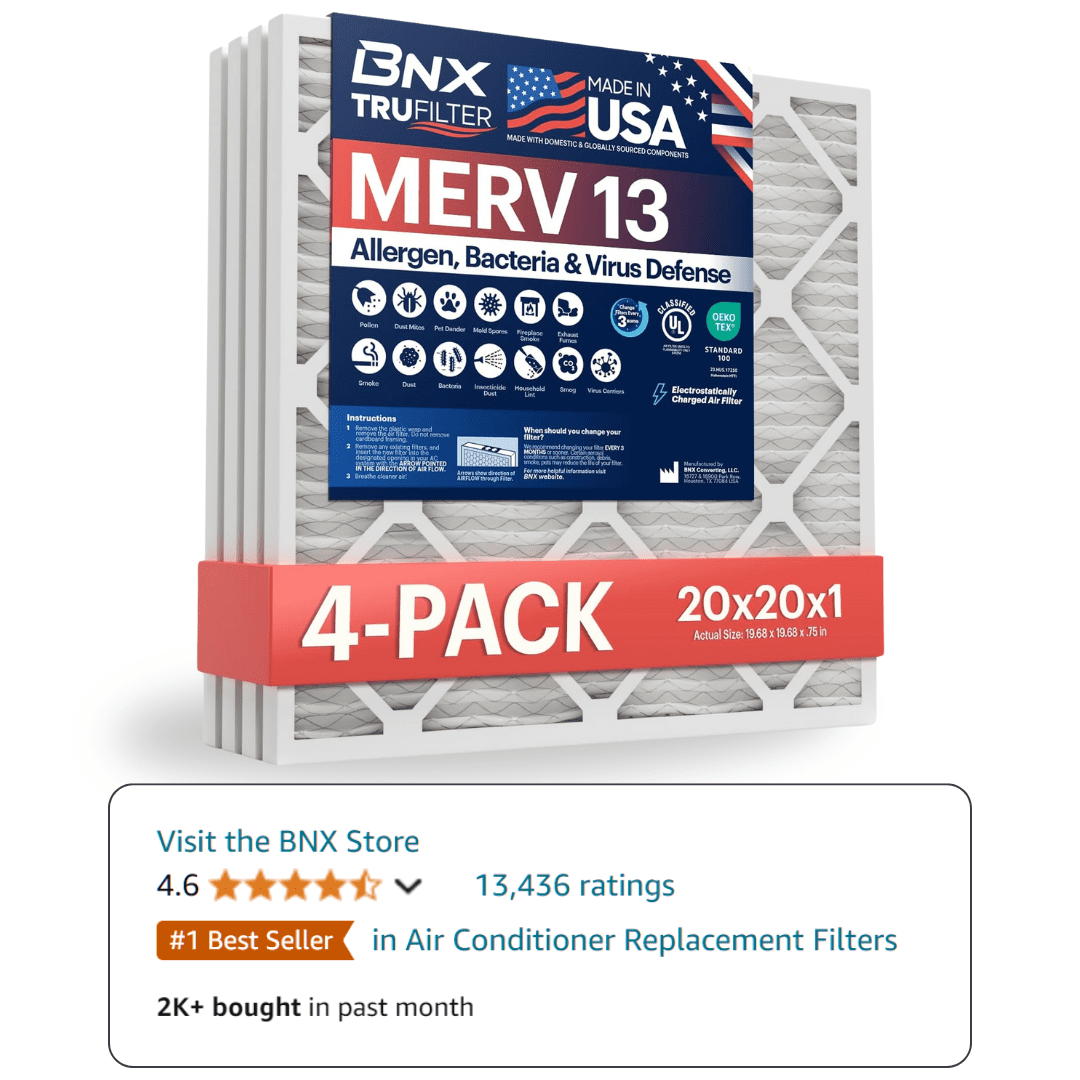2025 HVAC & IAQ Financing is More Important Than Ever
When your air conditioner fails in a heatwave or your furnace quits on a freezing night, the need for a new HVAC system becomes urgent.
But in 2025, homeowners face a new financial reality. The cost of replacing an HVAC system, already a significant investment averaging $5,000 to $12,500, is rising.
New federal regulations mandating higher energy efficiency standards and the phase-in of more environmentally friendly refrigerants like R-454B mean that the equipment itself is more technologically advanced and, consequently, more expensive.
This isn’t just an upgrade anymore; it’s a major home investment.
This “why now” moment extends beyond basic heating and cooling. Awareness around Indoor Air Quality (IAQ) has grown, with homeowners increasingly seeking solutions like whole-home humidifiers, advanced filtration systems, and energy-recovery ventilators to create healthier living spaces. These valuable additions can also be included in a financing plan, making comprehensive home comfort more attainable.
The financial hurdle is real. For the average household, an unexpected five-figure expense can be daunting, and depleting emergency savings for a purchase like this isn’t always the wisest move.
This is precisely where financing becomes a powerful tool. A well-structured financing plan allows you to install the high-efficiency, reliable system you need now without bearing the entire financial burden at once.
It transforms a potentially stressful emergency purchase into a manageable monthly investment in your home’s value, comfort, and your family’s well-being.
Your HVAC & IAQ Financing Options (Comparison)
Choosing how to pay for your HVAC system is just as important as choosing the system itself.
The “best” option depends on your credit score, financial standing, and timeline. Understanding the pros and cons of each path is critical to securing the most favorable terms.
Detailed Breakdown of Financing Options
Manufacturer Financing: Major brands like Carrier, Trane, and Lennox partner with large financial institutions such as Wells Fargo or Synchrony Bank to offer branded financing. You typically apply through your HVAC contractor during the sales process.
- How it Works: The contractor provides you with the application, which is for a credit card or installment loan specifically for the purchase, underwritten by the manufacturer’s financial partner.
- Pros: The biggest advantage is access to promotional offers, such as 0% APR for 12, 18, or even 60 months. The convenience of one-stop shopping through your contractor is also a major plus.
- Cons: These promotions are a double-edged sword. If the balance isn’t paid in full by the end of the promotional period, you could be hit with high, often retroactive, interest charges. Approval for the best offers almost always requires a good to excellent credit score.
Dealer-Specific Financing: Many local HVAC installation companies offer their own financing plans, often through third-party lenders that specialize in home improvement loans.
- How it Works: The HVAC dealer has established relationships with one or more lenders and will guide you through their preferred application process.
- Pros: Local dealers may have more flexibility in the plans they offer. They are motivated to make the sale and can be valuable guides in finding a plan that works for you.
- Cons: Terms and interest rates can vary dramatically from one dealer to another. It is crucial to vet the dealer’s reputation and carefully scrutinize the loan terms, as they may not be as competitive as other options.
Personal Loans: An unsecured personal loan from a bank, credit union, or online lender provides you with a lump sum of cash to pay your contractor directly.
- How it Works: You apply directly with the financial institution. Once approved, the funds are deposited into your account. You are then responsible for paying the contractor.
- Pros: You get a fixed interest rate and a predictable monthly payment for the life of the loan (typically 2-7 years). This separates the financing from the HVAC transaction, allowing you to act as a cash buyer. Rates can be very competitive, especially for those with strong credit.
- Cons: The interest rate you receive is heavily dependent on your credit score and income. Some loans may come with origination fees that are deducted from the loan amount.
Home Equity Loans & HELOCs: If you have equity in your home, you can borrow against it with a home equity loan (a lump-sum payment) or a Home Equity Line of Credit (a revolving line of credit).
- How it Works: You apply with a mortgage lender. The process is more involved than a personal loan and requires an appraisal of your home.
- Pros: These loans typically offer the lowest interest rates because they are secured by your property. The interest paid may also be tax-deductible (consult a tax advisor).
- Cons: Using your home as collateral is a significant risk. If you default on the loan, the lender can foreclose on your home. The application process is also longer than other options.
Credit Cards: For smaller repairs or if you have a card with a 0% introductory APR offer, a credit card can be a viable tool.
- How it Works: You pay the contractor with your existing credit card.
- Pros: It’s fast, easy, and requires no new application.
- Cons: Standard credit card APRs are extremely high. This option is only advisable if you can pay off the entire balance before the promotional period ends. Carrying a large balance can be very expensive and negatively impact your credit score.
Financing Options at a Glance
| Financing Option | Typical Interest Rates | Typical Loan Terms | Best For… | Key Considerations |
|---|---|---|---|---|
| Manufacturer Financing | 0% Promo APR; then 18%-29% | 12-60 months | Buyers with good credit who can pay off the balance during the promotional period. | High retroactive interest if not paid off in time. |
| Dealer-Specific Financing | 5%-25% | 2-10 years | Convenience and working with a trusted local contractor. | Terms vary widely; compare offers carefully. |
| Personal Loans | 7%-36% | 2-7 years | Homeowners who want a fixed payment and to be a “cash buyer.” | Interest rates are highly dependent on credit score. |
| Home Equity/HELOC | 5%-12% | 5-20 years | Homeowners with significant equity seeking the lowest interest rates. | Your home is used as collateral; longer application process. |
| Credit Cards | 0% Promo APR; then 20%-30%+ | Revolving | Small repairs or if you can exploit a 0% APR offer and pay it off quickly. | Extremely high standard interest rates make this a risky choice for large balances. |
Understanding the Fine Print
The devil is in the details. To truly compare financing offers, you need to look past the monthly payment and understand the core components of the loan.
- Repayment Terms (2-7 Years and Beyond): The loan term is how long you have to repay the money. A longer term means lower monthly payments, but you will pay significantly more in total interest over the life of the loan. A shorter term results in higher monthly payments but saves you money on interest.
- Interest Rates (APRs): The Annual Percentage Rate (APR) is the true cost of borrowing. It includes the interest rate plus any lender fees. A fixed rate stays the same for the entire loan term, providing predictable payments. A variable rate can change over time, meaning your payments could rise. For HVAC financing, fixed-rate loans are generally recommended for their stability.
- Monthly Payments: Your monthly payment is determined by three things: the loan amount, the APR, and the term. For example, a $10,000 loan paid over 5 years (60 months) at a 9% APR would result in a monthly payment of approximately $207.58. The total interest paid would be $2,455.
- Lump-Sum vs. Staged Payouts: Personal loans and home equity loans typically provide a lump-sum disbursement. This means you get all the money at once and are responsible for paying the contractor. Some other financing may pay the contractor directly, sometimes in stages based on project completion.
- The “0% APR” Trap: Promotional financing is tempting, but you must read the fine print. Many “0% APR” offers use a deferred interest model. This means if you have even $1 of the balance remaining when the promotional period expires, the lender can charge you all the interest that would have accrued from day one of the loan. Always have a clear plan to pay off the entire balance before the deadline.
Your Credit Score and HVAC Financing
Your credit score is the single most important factor in determining your financing options and the rate you will pay. Lenders use it to predict your ability to repay a loan.
Why Your Credit Matters: A higher credit score signals lower risk to lenders, which translates into more loan offers, lower interest rates, and better terms. A lower score can limit your options and lead to much higher borrowing costs.
Credit Tiers for HVAC Financing
- Excellent Credit (720+): You are in the driver’s seat. You can expect to qualify for the best offers, including 0% manufacturer promotions and the lowest rates on personal loans.
- Good Credit (680-719): You will still have access to many competitive financing options. You may not get the absolute lowest advertised rate, but you can secure a loan with reasonable terms.
- Fair Credit (620-679): Your options will be more limited. You can still find financing, but be prepared for higher interest rates. It is crucial to compare offers to avoid predatory terms.
- Bad Credit (Below 620): Securing traditional financing will be challenging, but not impossible.
- Be Honest with Your Contractor: Some dealers have relationships with lenders who specialize in financing for credit-challenged consumers.
- Explore “No Credit Check” Options: These lease-to-own programs base approval on factors like income instead of credit history. Be aware that this is the most expensive route, with very high effective interest rates.
- Focus on Secured Loans: If you have home equity, a HELOC may still be an option even with a lower credit score.
- Consider a Co-signer: Adding a trusted person with good credit to your application can help you get approved and secure a better rate.
Before you apply, check your credit report for free at AnnualCreditReport.com.
Dispute any errors and work on paying down high-balance credit cards to potentially boost your score.
Unlocking Extra Savings: Government Programs, Rebates, and Local Offers
Strategic use of rebates and tax credits can save you thousands of dollars, effectively reducing the total amount you need to finance.
- Federal Tax Credits (Inflation Reduction Act): For 2025, homeowners can claim the Energy Efficient Home Improvement Credit. This provides a credit of 30% of the project cost, up to a $2,000 annual maximum for qualifying high-efficiency heat pumps, central air conditioners, and furnaces. The equipment must meet specific ENERGY STAR standards. You claim this valuable credit when you file your federal income tax using IRS Form 5695.
- Utility Company Incentives: Nearly every local utility provider offers rebates for installing energy-efficient equipment. These can range from $50 to over $1,000. Visit the ENERGY STAR Rebate Finder online and enter your zip code to see a list of programs in your area.
- State and Local Government Rebates: Many states and municipalities have their own clean energy funds that provide additional rebates. Search your state’s Department of Energy website for information.
- Finding “HVAC Financing Near Me”: Don’t underestimate the power of local institutions. Local banks and credit unions often offer competitive rates on home improvement loans. Searching for local dealers who advertise financing can also uncover unique and competitive programs not available nationally.
For Contractors: How to Leverage Financing as a Sales Tool
For HVAC contractors, offering financing is no longer a perk; it’s a necessity.
- The Contractor’s Role: By offering financing, you empower customers to say “yes” to higher-efficiency systems and IAQ add-ons instead of settling for the cheapest option. It turns a large, intimidating price tag into a manageable monthly payment, overcoming the biggest sales obstacle.
- Partnering with Lenders: The most successful contractors partner with multiple financing providers. This allows you to offer a tiered solution: a prime lender for customers with excellent credit (e.g., a 0% APR offer), a near-prime option for those with fair credit, and even a lease-to-own program for credit-challenged individuals. This ensures you can serve every customer who walks through the door.
- Simplifying the Process: The key is to make it easy. Integrate financing options into your sales presentation. Use tablets for instant applications in the home. By guiding the homeowner through the process, you build trust and demonstrate your value beyond the installation itself.
Making a Confident and Informed Decision
Financing a new HVAC or IAQ system in 2025 is a smart financial strategy.
By understanding your options, from manufacturer promotions to personal loans, you can find a solution that fits your budget. Maximize your savings by layering federal tax credits, utility rebates, and local incentives.
This approach will significantly reduce your total cost and make your investment in home comfort and efficiency more affordable.
Always get multiple quotes from reputable contractors, discuss financing upfront, and most importantly, read any loan agreement carefully before you sign.
A little research now will lead to comfortable, stress-free savings for years to come.
Key Citations
- Best HVAC Loans And Financing Options Of 2025 – Forbes Advisor
- Federal Tax Credits for Energy Efficiency – ENERGY STAR
- Energy Efficient Home Improvement Credit – IRS
- 2025 Heat Pump and HVAC Trends – SumZero Energy Systems
- HVAC Financing: How Does It Work? – Trane
- HVAC Financing for Homeowners – Home Run Financing
- What HVAC System Qualifies for Tax Credit 2025? – Watkins Heating & Cooling
- Rebates on HVAC Systems – Carrier
- Inflation Reduction Act Residential Energy Rebate Programs – California Energy Commission



